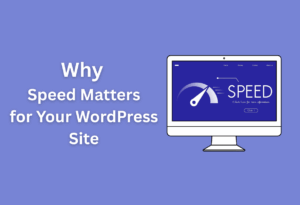With the ever-evolving digital landscape, it’s imperative for you to stay ahead by optimizing your website’s performance. The right tools and plugins can make a significant difference in how well your site runs and engages users.
This list of the 10 best tools and plugins will empower you to continuously monitor and enhance your page performance metrics, enabling you to create a smooth and efficient browsing experience for your audience.
Google PageSpeed Insights
For anyone looking to enhance their website’s performance, Google PageSpeed Insights is an invaluable tool. It provides detailed insights into how quickly your pages load, highlighting areas that may need improvement to deliver optimal user experiences.
Performance scoring
One of the first things you’ll notice is the performance score, which ranges from 0 to 100. This score is assessed based on various metrics, including loading time and responsiveness, giving you a clear understanding of where your site stands relative to performance standards.
Optimization suggestions
Little tweaks can lead to significant improvements in your website’s performance. PageSpeed Insights not only evaluates your current performance but also provides actionable optimization suggestions tailored to your site.
PageSpeed Insights offers suggestions like compressing images, enabling browser caching, and minimizing JavaScript to enhance load times. Utilizing these recommendations can help streamline your site, making it faster and more responsive for your visitors.
You can prioritize these suggestions based on their potential impact, allowing you to effectively allocate your resources to improve your site’s overall performance metrics.
GTmetrix
Assuming you’re looking to enhance your website’s performance, GTmetrix serves as an exceptional tool for this purpose. It offers a comprehensive analysis of your page’s speed and various performance metrics, helping you identify areas that require optimization.
This powerful tool aggregates data from Google Lighthouse and WebPageTest, providing you with meaningful insights that can effectively guide your improvement strategies.
Page load details
While using GTmetrix, you will find detailed page load metrics that highlight how fast your website loads and the elements impacting its performance. This includes insights into Time to First Byte (TTFB), fully loaded time, and page size, giving you a well-rounded picture of your website’s responsiveness.
Historical data tracking
If you want to monitor your website’s performance over time, GTmetrix provides historical data tracking to see how your optimizations lead to improvements or regressions in your metrics. This feature allows you to compare past performance against current data, ensuring you have an ongoing perspective on your page’s efficiency.
Data tracking becomes a powerful asset when you make changes to your site. By observing the historical data, you can determine how adjustments affect your load times and overall experience for users.
Analyzing these trends helps you understand what strategies work best and enables you to create a roadmap for continuous improvements, ensuring your website remains competitive in performance standards.
Pingdom
If you are looking for a robust tool to help keep your website running smoothly, Pingdom should be on your radar. This comprehensive platform not only monitors your website’s uptime but also provides in-depth performance insights that can be invaluable for optimizing your site.
Uptime monitoring
While it’s necessary to know that your website is online, Pingdom simplifies uptime monitoring by providing real-time alerts whenever your site goes down, allowing you to take immediate action to resolve issues and minimize downtime.
Performance metrics
Little details matter when it comes to performance, and Pingdom excels in delivering metrics that help you understand your website’s speed and load times. This information is vital for identifying areas where improvements can be made.
Monitoring performance metrics with Pingdom means accessing details like page load times, the size of resources, and the number of requests your site makes. By analyzing these metrics, you can pinpoint bottlenecks and optimize your website for faster load times, ultimately enhancing user experience and boosting your search engine rankings.
WebPageTest
Once again, WebPageTest stands out as a powerful tool for monitoring and optimizing your page performance metrics. This tool allows you to analyze your website’s load times and provides in-depth insights, giving you the ability to identify bottlenecks and enhance user experience effectively.
Real-world testing
Any performance tool is only as good as its ability to simulate real user experiences, and WebPageTest excels in this area. By allowing you to test your site from various locations using different browsers, you can gather accurate performance data tailored to your target audience.
Visual waterfall chart
Any website optimization strategy can benefit immensely from the visual waterfall chart that WebPageTest provides. This chart illustrates the loading sequence of your site’s assets, offering a clear visualization of how each element contributes to overall load time.
You can utilize the visual waterfall chart to pinpoint which resources are delaying your page load. By analyzing the timing of images, scripts, stylesheets, and other assets, you can make informed decisions on how to improve your site’s performance. This granular view helps you identify the specific elements that need optimization, enabling you to enhance your website’s speed and efficiency effectively.
Lighthouse
All web developers and site owners should be aware of Lighthouse, an open-source tool created by Google to help you assess the performance of your web pages. It provides valuable insights into your site by analyzing various performance metrics, accessibility, SEO, and best practices, enabling you to make informed decisions for optimization.
Auditing Tool
With Lighthouse, you can easily perform audits on your web applications and monitor their performance. It generates detailed reports that reveal areas of improvement, offering actionable recommendations to enhance user experience and site speed. This makes it an invaluable tool in your performance optimization toolkit.
Performance Tracking
Clearly, tracking your website’s performance is vital for maintaining user engagement and satisfaction. Lighthouse allows you to continuously monitor important metrics, ensuring you stay ahead of any potential performance issues.
It automatically assesses key elements such as load time, interactivity, and visual stability, providing you with a clear understanding of how your site performs over time. By analyzing Lighthouse reports regularly, you can identify trends, measure the impact of your optimization efforts, and adjust your strategies accordingly to keep your site running smoothly and efficiently.
New Relic
After implementing New Relic, you can significantly improve your website’s performance by gaining deeper insights into application behavior and user experience.
Application performance
Any time you want to monitor your application’s performance, New Relic provides real-time data on various metrics, such as response time and throughput. This helps you quickly identify bottlenecks and optimize your application for better speed and efficiency, enhancing the overall user experience.
Analytics dashboard
For easy navigation and data interpretation, New Relic offers a comprehensive analytics dashboard that visualizes key performance indicators. This allows you to see trends, pinpoint issues, and make informed decisions to improve your website’s performance.
Application performance analytics in New Relic can display metrics like error rates, response times, and transaction performance. You can customize dashboards to focus on the metrics that matter most to you, enabling a tailored view of your application’s health. By leveraging these insights, you can proactively address issues and refine your strategies to enhance your website performance continuously.
Dynatrace
Despite the complexity of modern applications, Dynatrace simplifies monitoring and performance optimization with its comprehensive suite of tools. This powerful platform offers a unique combination of AI-driven insights and user-friendly navigation, making it an necessary choice for developers and businesses seeking to enhance their digital experience.
Full-stack monitoring
On Dynatrace, you gain a complete view of your entire technology stack. It effectively monitors everything from cloud infrastructure to application performance, giving you the edge in addressing issues before they impact your users. By aggregating data from various sources, Dynatrace ensures that you have a thorough understanding of how all components work together.
Real-time insights
If you need timely and actionable information, Dynatrace delivers real-time insights that empower you to make informed decisions. With its advanced monitoring capabilities, you can track performance metrics as they happen, enabling you to quickly diagnose and resolve issues that can affect user experience.
Any delay in addressing performance problems can lead to dissatisfied users. Dynatrace’s real-time insights allow you to pinpoint slowdowns or bottlenecks, ensuring your application runs smoothly. By leveraging these insights, you can refine your strategies and make necessary adjustments without missing a beat, ultimately enhancing your website’s performance and user satisfaction.
Ahrefs
To enhance your website’s performance, Ahrefs provides a comprehensive toolset that includes important monitoring and optimization features. This powerful SEO tool helps you analyze various aspects of your site, ensuring that your pages are not just optimized for search engines but also deliver an exceptional user experience.
Site audit features
If you want a thorough evaluation of your website, Ahrefs offers robust site audit capabilities that analyze your pages for common issues like broken links, slow-loading elements, and title tag optimizations. By understanding these factors, you can take actionable steps to improve your site’s overall performance.
Performance improvements
Audit your website’s performance regularly with Ahrefs to identify areas for enhancement. The tool highlights specific factors that may be impacting your site’s speed, such as unoptimized images or excessive JavaScript. By addressing these issues, you can enhance the responsiveness of your pages and create a smoother browsing experience for your audience.
You can also benefit from Ahrefs’ detailed insights into competing websites, allowing you to benchmark your performance against others in your industry. By utilizing these insights, you can implement strategies that align with effective practices from market leaders, ensuring your pages not only perform well but also rank favorably in search results.
SiteSpeed.io
Many website owners recognize the importance of monitoring and optimizing their site’s performance. SiteSpeed.io is a powerful tool designed to help you achieve just that, allowing you to continuously analyze your page performance metrics and make informed improvements to user experience.
Continuous testing
With SiteSpeed.io, you can implement continuous testing into your development process, ensuring your site maintains optimal performance over time. This tool enables you to schedule automated tests, allowing you to catch performance issues before they impact your visitors.
Custom dashboards
With SiteSpeed.io’s custom dashboards, you can easily visualize your performance metrics tailored to your needs. This offers a comprehensive overview of your website’s performance data, helping you make data-driven decisions to enhance site speed and user experience.
Any custom dashboard you create can include a variety of relevant metrics, such as load times, page size, and request counts, which can help you easily identify trends and anomalies. By personalizing your dashboard, you’ll be able to focus on the most relevant data for your website and streamline your optimization efforts, making it simple to track progress and make necessary adjustments as needed.
Cloudflare
Keep your website running smoothly and efficiently with Cloudflare, a powerful tool that helps monitor and optimize your page performance metrics. Their user-friendly interface is designed to empower you to manage your site’s speed and reliability easily.
CDN Optimization
The Content Delivery Network (CDN) optimization provided by Cloudflare ensures that your website’s static content is delivered seamlessly to your users. By caching your assets across numerous global servers, you significantly reduce latency and improve load times, leading to a better user experience and increased SEO performance.
Performance Enhancements
Clearly, Cloudflare offers various performance enhancements to supercharge your website’s performance. This includes features like minification of CSS, JavaScript, and HTML, automatic image optimization, and reliable load balancing. These enhancements not only reduce the size of your files but also ensure that users experience minimal delays while navigating your site.
To take full advantage of these performance enhancements, you’ll want to explore Cloudflare’s comprehensive settings. Adjusting options like Rocket Loader™ for asynchronous loading of JavaScript can dramatically improve your load times. Additionally, leveraging automatic image optimization helps to reduce load times on image-heavy pages without sacrificing quality, making your site more appealing to visitors and boosting overall engagement.
Conclusion
From above, it’s clear that leveraging the right tools and plugins can significantly enhance your website’s performance metrics.
By selecting from the 10 best options, you empower yourself to continuously monitor and optimize your site’s efficiency, ultimately contributing to improved user experience and engagement.
Investing time in these resources allows you to make data-driven decisions that align with your goals, ensuring that your website remains competitive in today’s digital landscape.





